|
Massimo Introvigne, Editor of Bitter Winter, Published the Third Article about Lifechanyuan and the Second Home
Jiejing Celestial
November 13, 2025
We are pleased to share the third article in the series: “Inside Lifechanyuan: Cosmology and Creation”, published on October 15, 2025.
This chapter offers a profound exploration of the origins of the universe and humanity, delving into the essence of life and the meaning of existence. It combines the metaphysical mystery of cosmology, the psychological depth of human inquiry, and the ethical brilliance of spiritual reflection.
Through this luminous narrative, readers are guided to experience both the vastness of the cosmos and the serenity of the soul. The article invites us to discern the contours of truth, to feel the radiance of wisdom, and to embrace the strength of ideals and faith.
Building upon the journey of the previous chapters, this third installment expands the vision of Lifechanyuan, leading us across time and spirit into a deeper resonance with the eternal questions of creation and existence.
Inside Lifechanyuan. 3. Cosmology and Creation
10/15/2025 Massimo Introvigne
The community’s account of the origins of the universe and humankind is metaphysical, psychological, and ethical.
by Massimo Introvigne
Article 3 of 6. Read article 1 and article 2.
Guide Xuefeng.
Lifechanyuan has quietly developed a comprehensive metaphysical system. Its founder, Guide Xuefeng, blends Taoist, Buddhist, and Abrahamic motifs into a sweeping cosmology that begins before the universe’s birth and culminates in the creation of humanity—not once but multiple times, by different divine agents. Based on foundational texts by Xuefeng and interviews with community members, this article traces their theory of origins, from the ineffable Wuji to the spiritual ancestry of East Asia.
Before anything existed—before time, space, matter, or spirit—there was Wuji. In Lifechanyuan’s metaphysics, Wuji is not merely emptiness but a paradoxical fullness. It is the shapeless source from which all arises, akin to the Buddhist notion of the Void and the Taoist idea of the uncarved block.
Wuji is described as a state beyond duality, where opposites do not exist yet. It is timeless because time requires motion, and motion requires form. As Xuefeng writes, “If the Earth is not born, does the Earth have time? If the Universe is not born, does the Universe have time? No. This is the time in Wuji.”
To illustrate Wuji’s nature, Xuefeng invokes a scene from the 16th-century Chinese novel “Journey to the West,” where the Monkey King is trapped inside a magical cymbal that expands or contracts with his size. Wuji, like the cymbal, is both infinitely large and infinitesimally small—its dimensions determined by the presence or absence of matter.
From Wuji emerges Taiji, the first structured energy form. Taiji is a “locked reservoir containing billions of billions of Pacific,” a metaphor for its immense latent power. When chaos begins to organize, the first “tornado” of potential energy forms at a central point. “Before the Universe was born, ‘something’ existed. This ‘something’ is Taiji, the psychic energy of the Greatest Creator.”
This central point undergoes a transformation under immense energetic pressure. Like a fertilized egg developing consciousness in the womb, the energy center becomes a structured entity. And with structure comes awareness. Thus, the Greatest Creator is born—not as a deity in robes but as the first consciousness arising from the energetic matrix of Taiji.
This Creator is not static. The energies of Taiji begin to orbit its consciousness, initiating movement, polarity, and eventually, the birth of space and time. “After the Greatest Creator is born, the ‘two polarities’ come into being, the celestial bodies show up, the celestial movement begins, the unlimited space is born, the time starts, and everything gets into the movement cycle of life and death.”
Taiji gives rise to the “two polarities”—existence and non-existence, yin and yang, light and darkness. These opposites generate the “four directions,” producing the “eight trigrams” of the Chinese I Ching, the Book of Changes.
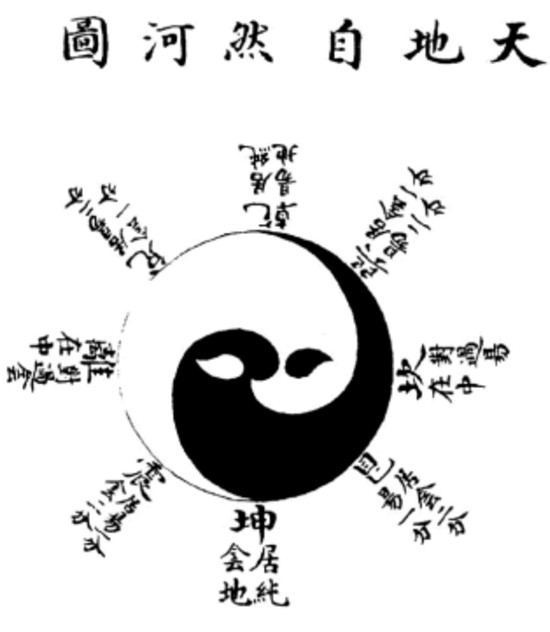
An 18th-century representation of the eight trigrams. Credits.
These trigrams are more than simple symbols; they are energetic archetypes. Their permutations produce the sixty-four I Ching trigrams, which Xuefeng asserts encode the universe’s fundamental laws. “The birth and death of all things, the limitless mysteries, and all changes and movements in the Universe are hidden in the permutation and combination (formula) of these 64 trigrams.” They are “hidden to the common people.” Even “the most achieved Taoists in China only knew a few of the factors. Sakyamuni masters half of them, and Jesus only knows a few more than Sakyamuni does”: “No disclosure of the Heaven secrets.”
With this metaphysical framework established, Lifechanyuan shifts its focus to modern science. It contends that evolution is an incomplete and self-deceptive theory. Guide Xuefeng criticizes the absence of transitional fossils and questions the likelihood of complex biological structures emerging from random mutations.
He points to the Cambrian Explosion as evidence of sudden creation: “It is like mushrooms growing everywhere along ditches and grasslands after an overnight drizzle, which is by no means a slow and gradual process.” He also invokes the geometric precision of beehives and the instinctual genius of animals as phenomena that evolution cannot explain.
In his words: “The birth of Lifechanyuan has proved evolution theory has ‘absolutely broken down.’ Evolutionism cannot prove the origin of humanity. Human beings were not evolved from animals at all.”
Lifechanyuan does not reject the Biblical narrative about Adam and Eve outright but reinterprets it as a localized story. It argues that the Genesis account describes the origin of the Israelite people, not all humanity. The story of Cain fearing retribution implies the existence of other humans beyond Adam’s family.
“If what the Bible recorded is true,” Xuefeng writes, “there must be some other men who exist except Adam’s family, and they must have long existed before Adam’s family. Otherwise, Cain would not say, ‘every one that findeth me shall slay me.’ So, if there lived other humans, and they were not descendants of Adam and Eve (back then, Adam and Eve only had two sons, and Abel was killed by Cain), we can say Adam and Eve are not the ancestors of all human beings, and what the Bible recorded is only the story of the origin of the Israelite people. The Bible only recorded the origin of the Middle East people, and not that of all human beings.”
This opens the door to a broader, multi-lineage theory of human origins.
After creating the universe, the Greatest Creator delegates its management to gods—conscious energy entities formed from concentrated energy balls. Among the myriad gods, Jesus and Satan are the two dominant gods overseeing Earth’s universe. They represent opposing principles: light and darkness, kindness and cruelty, ordinary and extraordinary.

A collection of Guide Xuefeng’s article on Jesus and Satan.
Xuefeng challenges the conventional idea that Satan is “an enemy… a demon that devours life. This is a tremendous misunderstanding and injustice. In reality, Satan is faithfully and dutifully fulfilling his divine responsibility.” Satan indeed works to prevent people from reaching the higher realms of life. However, in the dualistic view of Lifechanyuan, reminiscent of some ancient Gnostic texts, Satan and Jesus are both needed to maintain the universe’s balance.
The Creator also created angels to assist them. These beings, lower in energy than gods, are messengers and helpers. Over time, angels split into two factions: those aligned with Satan became Buddhas, and those aligned with Jesus became Celestials.
“Buddha means a ‘human’ who is not human,” Xuefeng explains. Buddhas possess supernatural powers but may be prone to arrogance. Celestials, by contrast, are gentle, fun-loving, and nature-oriented.
According to Lifechanyuan, Jesus, aided by hundreds of millions of celestial beings, led the solar system’s creation 4.5 billion years ago. Celestials designed Earth’s ecosystems, crafted the moon as a stabilizing satellite, and used UFOs to spread life.
“The UFOs we occasionally see are not from outer space; they are from the center of the moon, which is a huge warehouse. It stores many ‘tools’ which had been used by celestials; UFO is also one of the ‘tools:’ There is a door on the moon; it can be opened at any time.” “Celestials can remotely control UFOs in the warehouse of the moon to monitor the earth according to their needs.” There is also a giant “palace” under the mysterious Bermuda Triangle that is “the temporary ‘lodge’ for the visiting celestials.”
But Satan, jealous of their happiness, sent Buddhas to Earth to release destructive creatures—including carnivorous animals, mosquitoes, snakes, and even dinosaurs. The Creator responded with a plague that wiped out the dinosaurs, although two survived beneath the bottom of the East China Sea and later re-emerged in human form.
Approximately 1.6 million years ago, the Greatest Creator fashioned a new life form: humans. Celestials tried to create them in Egyptian laboratories—pyramids are remnants of those efforts. Early prototypes included monkeys and apes. Ultimately, they made three human groups: Black Africans, Native Americans, and White Europeans.
Meanwhile, another god created Adam and Eve in the secret garden of Eden near Jerusalem. Their descendants spread throughout the Middle East. Cain’s fear of being killed makes sense, then, since other humans already existed.
According to Lifechanyuan, East and Southeast Asians were not created by gods but emerged from the two surviving dinosaurs. These beings transformed into human form and propagated along the Yellow River. This explains the Chinese reverence for dragons and their self-identification as “descendants of the dragons.”
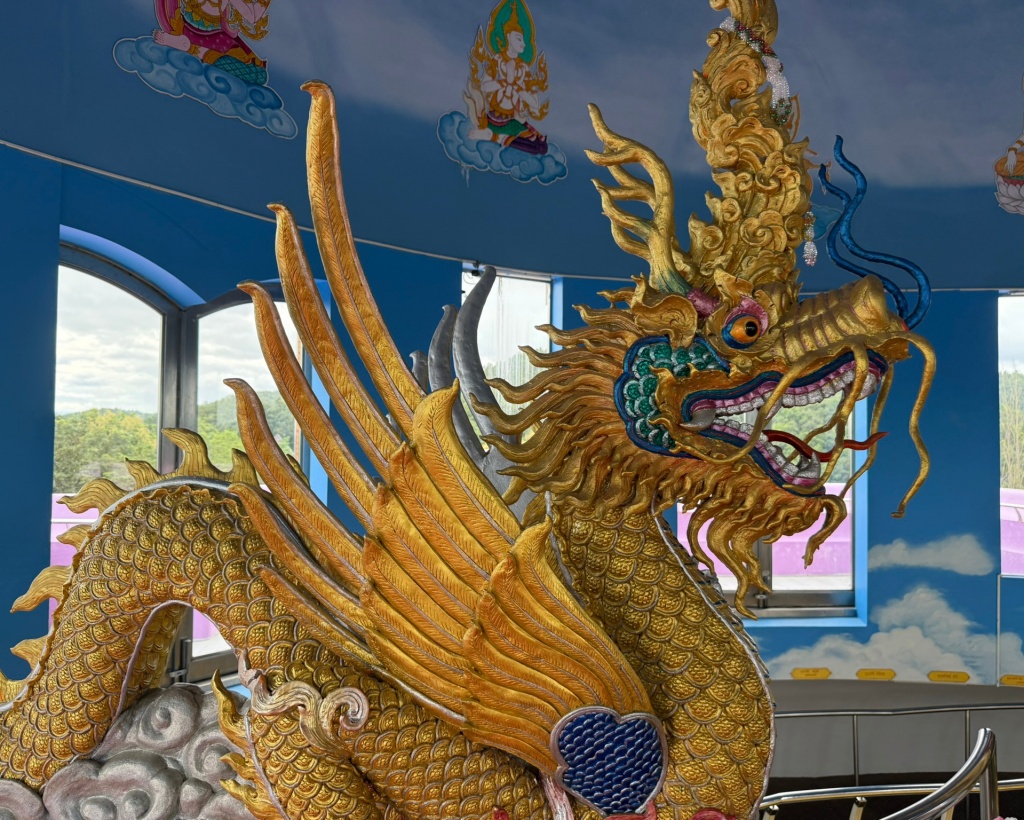
Dragon in a Thai temple near Lifechanyuan’s Second Home.
Buddhism originated in India and found fertile ground in East Asia because of this lineage. The ancestors of Shakyamuni came from India to the Yellow River area. Indians, however, were of mixed descent, as a group of descendants of dragons had moved there and intermarried with the descendants of Adam and Eve. “Because Indian people were designed by a different creator, they were reluctant to accept the theory of Buddhism… That’s also why, although Buddhists had made great efforts, it still failed in India.”
The Great Flood, mentioned in both the Bible and Chinese legends, was a divine reset. It marked the second such reset, as the first had wiped out the stronger, taller humans who had established their centers in Egypt, Atlantis, and the City of Maya. These humans were cruel and selfish, and they even ascended to higher levels of paradise—the “Ten-thousand-year World” and the “Elysium World”—to cause trouble.
So, the Greatest Creator destroyed them, leaving only some “weak and less intelligent humans” on Earth. The Greatest Creator built a lesser paradise to comfort them, a planet 960 light-years away—the “Thousand-year World.” Those who live virtuously can ascend there after death.
However, humans again became arrogant, ignoring the Greatest Creator and succumbing to materialism. About 4,700 years ago, the Creator tilted Earth’s axis, causing storms that drowned most life.
Yet survivors still existed worldwide. They were not only Noah and his family. Stories of a flood and humans surviving it are told across many cultures, from China to the Americas.
Lifechanyuan’s cosmology is metaphysical, psychological, and ethical. It offers a layered account of creation, consciousness, and human diversity. It challenges scientific orthodoxy while incorporating ancient Chinese wisdom and global religious perspectives.
Whether one accepts its claims or not, Lifechanyuan offers a coherent and internally consistent worldview. It is a cosmology of consciousness, a spiritual anthropology, and a metaphysical engineering manual—all combined into one. And in a world hungry for meaning, it dares to ask: What if the universe were not a machine but a mind?
Link: https://bitterwinter.org/inside- ... ology-and-creation/
|
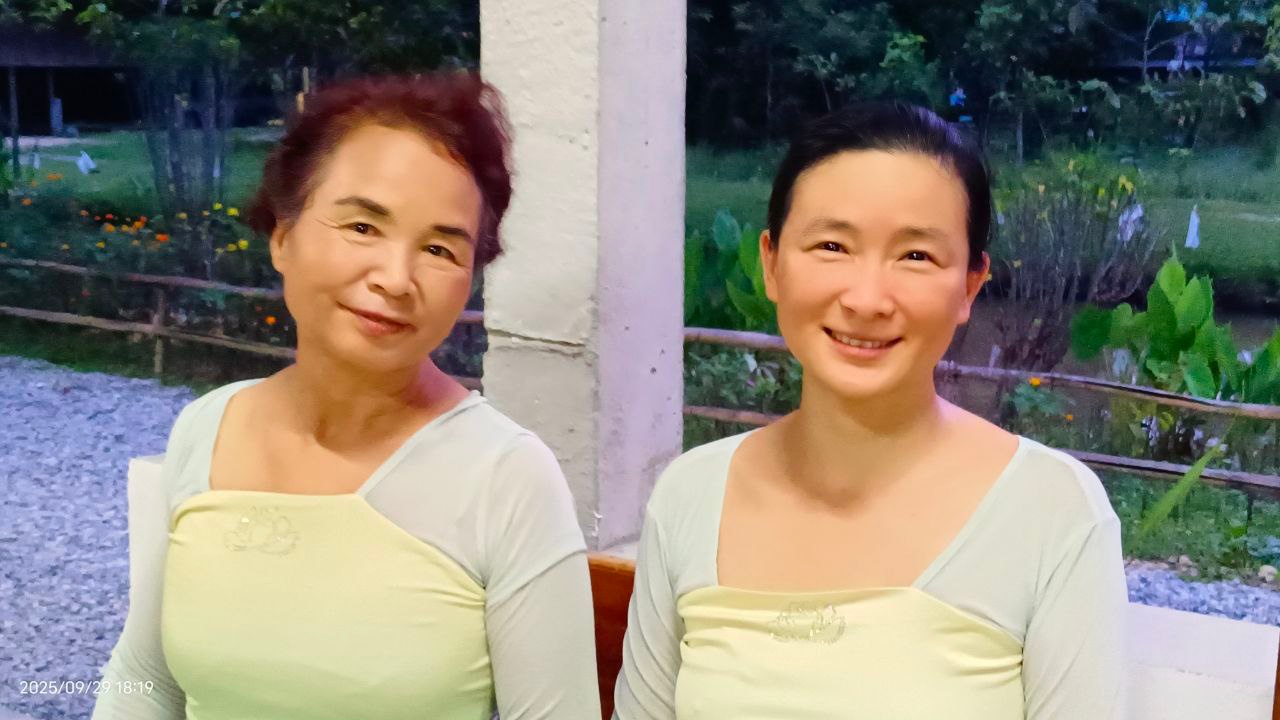 Massimo Introvigne, Editor of Bitter Winter, Published the Sixth Article about L
Massimo Introvigne, Editor of Bitter Winter, Published the Sixth Article about L
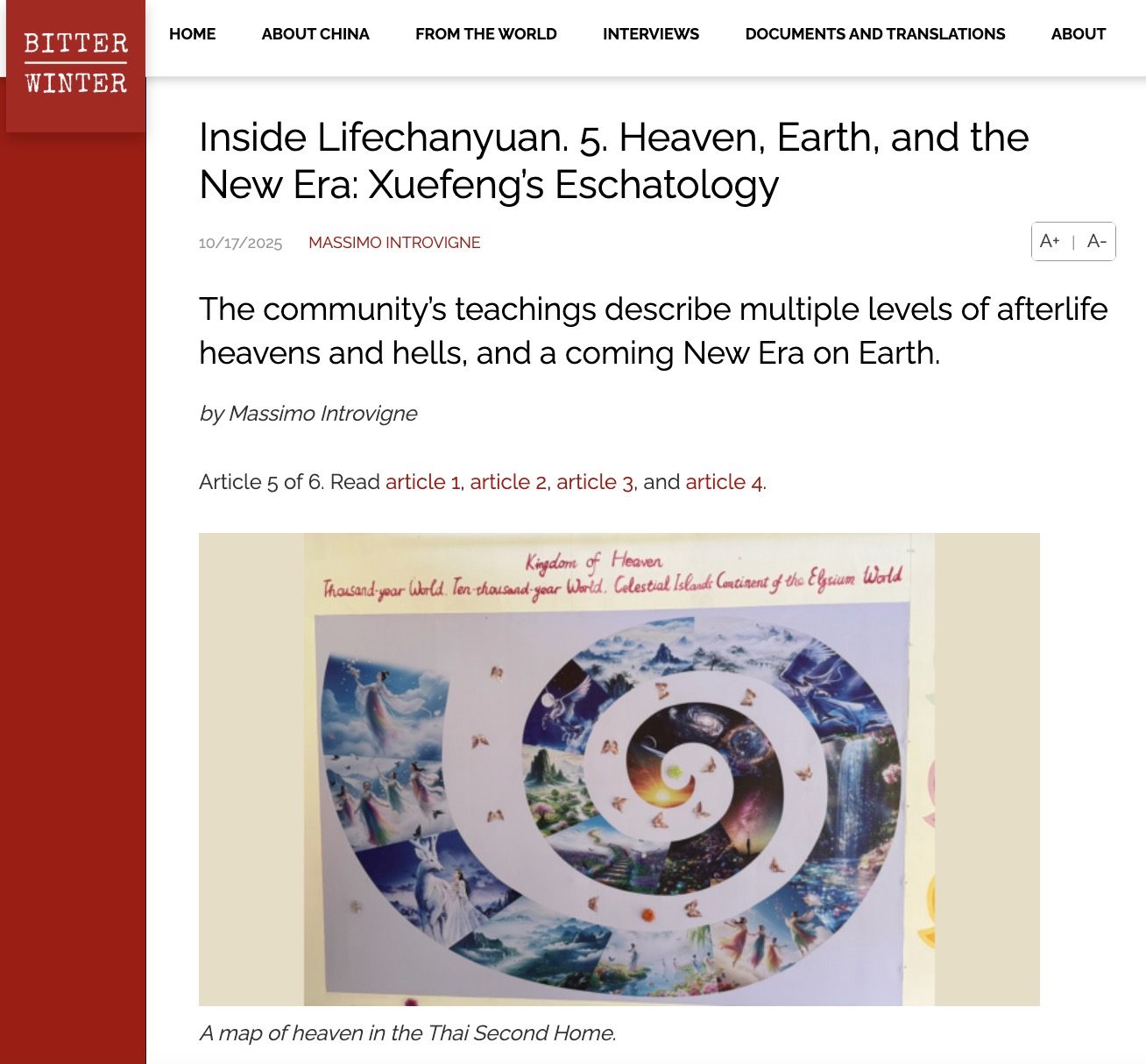 Massimo Introvigne, Editor of Bitter Winter, Published the Fifth Article about L
Massimo Introvigne, Editor of Bitter Winter, Published the Fifth Article about L
 Massimo Introvigne, Editor of Bitter Winter, Published the Fourth Article about
Massimo Introvigne, Editor of Bitter Winter, Published the Fourth Article about
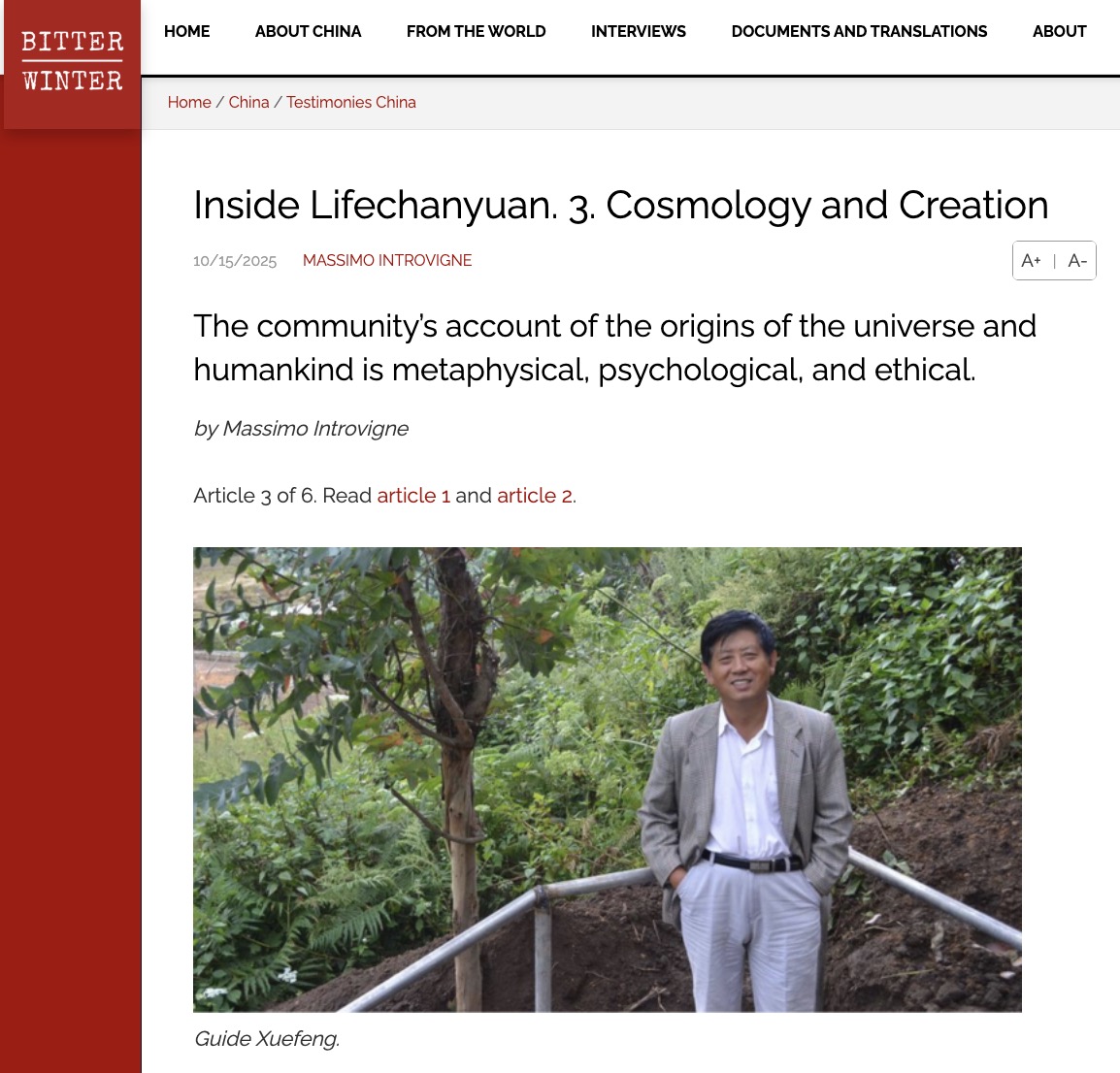 Massimo Introvigne, Editor of Bitter Winter, Published the Third Article about L
Massimo Introvigne, Editor of Bitter Winter, Published the Third Article about L
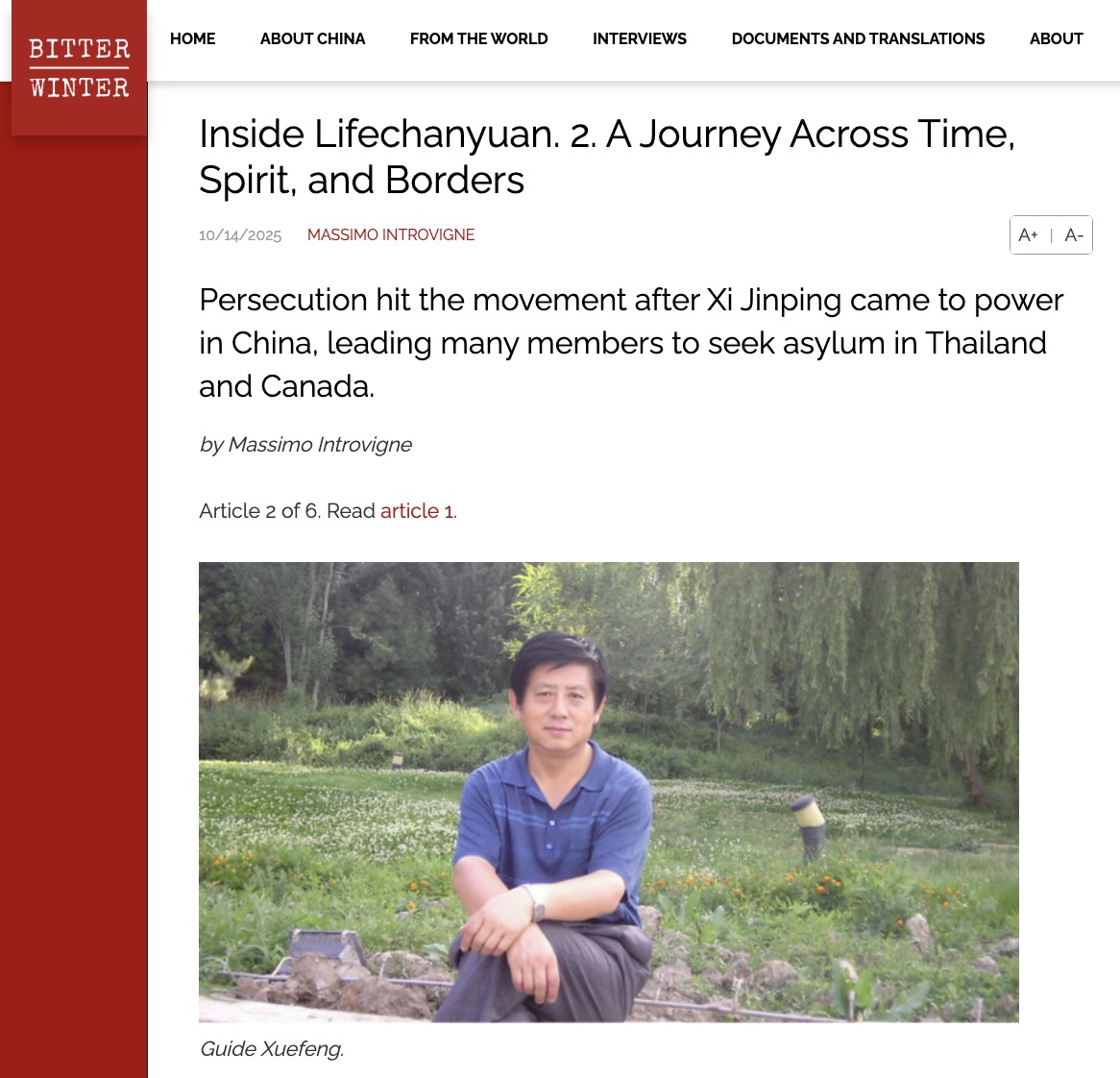 Massimo Introvigne, Editor of Bitter Winter, Published the Second Article about
Massimo Introvigne, Editor of Bitter Winter, Published the Second Article about
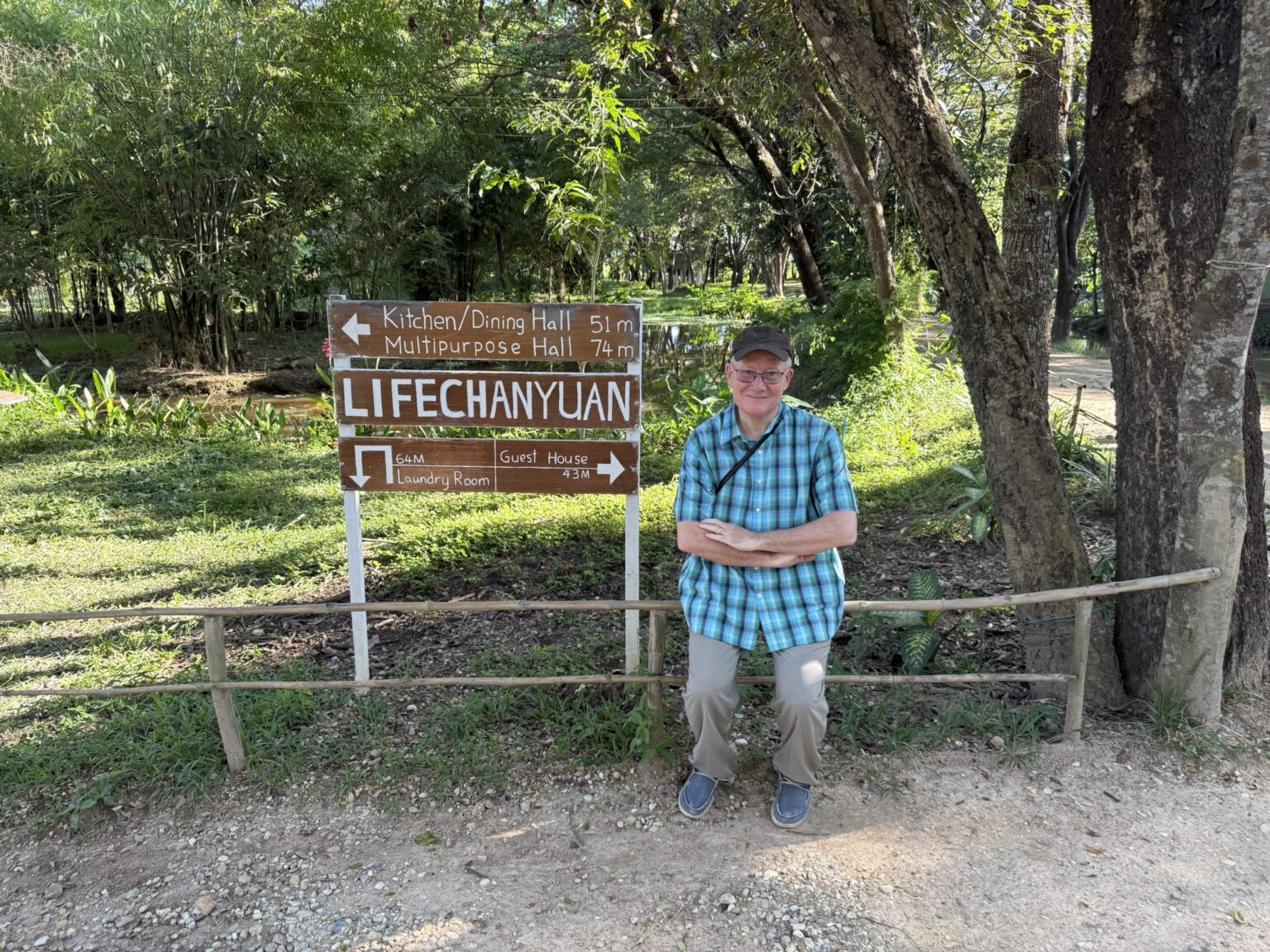 Massimo Introvigne, Editor of Bitter Winter, Publishes the First Article about L
Massimo Introvigne, Editor of Bitter Winter, Publishes the First Article about L


 Post time 2025-11-13 16:48:07
Post time 2025-11-13 16:48:07







